How to quickly batch clean watch parts?
Browse Volume:1114 Classify:Support
Most of the parts of clocks and instruments are composed of small precision parts such as case, strap, mounting plate, gear, rack, hairspring, shaft hole, etc. The quality of the instrument is not only the manufacturing accuracy, but also the metal surface wear resistance, decorative. The cleanliness of the surface coating before treatment is also an important indicator of quality. To ensure the quality of the overall product, the parts must be strictly cleaned. In the traditional cleaning process, organic solvents are generally used as cleaning agents. But organic solvents have shortcomings such as flammability, toxicity, poor rust resistance, high cost, and environmental pollution. Especially in the case of high air humidity, after organic solvents After solvent cleaning, parts are prone to rust spots. Therefore, it is very important to choose a reasonable cleaning process and suitable cleaning agent.
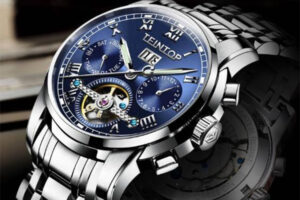
Granbosonic watch cleaning
Watch cleaning features
The main pollutants of watch parts are processing oil, polishing paste, hand sweat, dust, and tiny metal particles. Among them, the polishing paste is more difficult to clean. It contains stearic acid, and the cleaning temperature is higher than 60 ℃.
The clock parts are relatively small, with many gears, racks and small holes and small shafts, and the precision requirements are relatively high.
The cleaning solution can be water-based or solvent-based. Water-based products should pay attention to rust prevention, especially in the drying process after cleaning. Ultrasonic-assisted cleaning is generally used for cleaning, otherwise the dirt in the inner hole will not be easy to clean in the slits of the small holes and pinions.
Because the work piece is small, the cleaning basket is usually covered with stainless steel wire mesh, and the ultrasonic cleaning is radiated from top to bottom, and the micro-throwing is added to avoid the shielding of the ultrasonic wave by the fine mesh.
Choice of watch cleaning fluid
Water-based cleaning solution + surfactant: mainly through the surfactant, the surface tension of the aqueous solution is reduced, and it has physical and chemical effects such as wetting, emulsifying, dispersing and solubilizing, and achieves the purpose of decontamination. It is suitable for cleaning most oil stains.
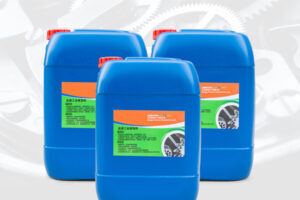
Cleaning Solution
Solvent cleaning agent: refers to petroleum hydrocarbons, halogenated hydrocarbons, alcohols, ethers and esters with organic solvents that have the ability to dissolve oil stains. For example, n-propane (nPB), AK-225, hydrocarbon solvent, etc. to replace ODS solvent.
Watches and Clocks Ultrasonic Cleaning Process
1. Water-based cleaning process: [Hot water-based soaking + ultrasonic cleaning 1] → [Hot water-based soaking + ultrasonic cleaning 2] → [Hot DI water rinsing] → [Hot air drying], the ultrasonic frequency is 28kHz optional, Power can be adjusted according to batch size.
b. The cleaning solution of the first tank and the second tank is water-based + surfactant. And the electric heating tube is heated to 80 ℃, and the immersion ultrasonic is used to remove the abrasive paste and grease dirt.
c. Rinse with DI water and heat at about 90℃ to remove the remaining dirt.
d. Supplemented by mechanical throwing, the throwing loosens the small parts, facilitates the removal of dirt, and prevents the secondary adsorption of cleaned particulate dirt.
e. The compressed air must be filtered when the hot air is dried. The precision of the hot air filter used is 0.1um. When the hot air temperature is adjusted to 80°C, there is no residue after the hot air drying.
f. Anti-rust treatment is required for watch parts so that the work piece does not corrode and rust. This is an important process for water-based cleaning of precision parts.
2. Pre-coating process of watch case, watch strap, etc.: [wax removal water + ultrasonic 1] → [deionized water rinse 1] → [metal cleaning agent + ultrasonic 2] → [deionized water rinse 2] → [hot air drying ]
a. The ultrasonic frequency is 28kHz optional, and the power can be adjusted according to the batch size.
b. The first tank cleaning solution is dewaxing water. The main components of dewaxing water are some surfactants, additives, corrosion inhibitors, cosolvents, etc. After compound preparation, the products can be used at room temperature, heating, ultrasonic, immersion, etc. It can quickly and completely remove various wax scales in the process of washing and other processes, and does not produce side effects such as corrosion and oxidation on various substrates such as stainless steel, carbon steel, zinc alloy, aluminum alloy, magnesium alloy, and copper alloy.
c. The third tank cleaning solution is metal cleaning agent, and its main components are surfactant and corrosion inhibitor. Surfactants are surface-active substances with non-ionic, anionic or zwitterionic properties. This special molecular structure enables them to have a special distribution in water or oil-water mixtures, that is, they are more concentrated and directionally adsorbed on the surface of the liquid, while the internal The concentration is small, and this distribution can enhance the wetting, infiltration, dispersion and emulsification of the liquid.
d. Use DI water for rinsing and heating at about 90°C to remove the residual liquid and remaining dirt from the previous process of the parts.
e. Supplemented by mechanical throwing, the throwing loosens the small parts, facilitates the stripping of dirt, and prevents the secondary adsorption of cleaned particulate dirt.
f. The compressed air must be filtered when the hot air is dried. The precision of the hot air filter used is 0.1um. When the hot air temperature is adjusted to 80°C, there is no residue after the hot air drying.
3. Solvent-like cleaning process: [solvent soaking + ultrasonic 1] → [solvent soaking + ultrasonic 2] → [vapor phase rinsing] → [condensing drying], the ultrasonic frequency is 28 ~ 40kHz, and the power can be adjusted according to the size of the work piece .
b. The solvent is AK-225, and the KB value of AK-225 is 31, which means that it has a balanced dissolving power for grease, dust and other dirt, and ultrasonic cleaning is added to accelerate the dissolution of abrasive paste and grease pollutants.
c. Supplemented by mechanical throwing, the throwing loosens the small parts, facilitates the stripping of dirt, and prevents the secondary adsorption of cleaned particulate dirt.
d. Vapor-phase rinsing, the latent heat of vaporization is small, indicating that the energy consumption of generating vapor is small, and it is easy to dry.
e. Condensation and drying, the work piece is brought out of the steam area, and stays in the condensation layer for a while, the watch parts are fully dried, and the cleaning process is completed.
https://www.facebook.com/Granbo-Ultrasonic-Cleaner-Equipments-109665878186199
 Granbo Sonic
Granbo Sonic



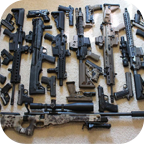

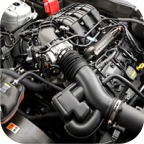



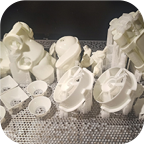






Hello!